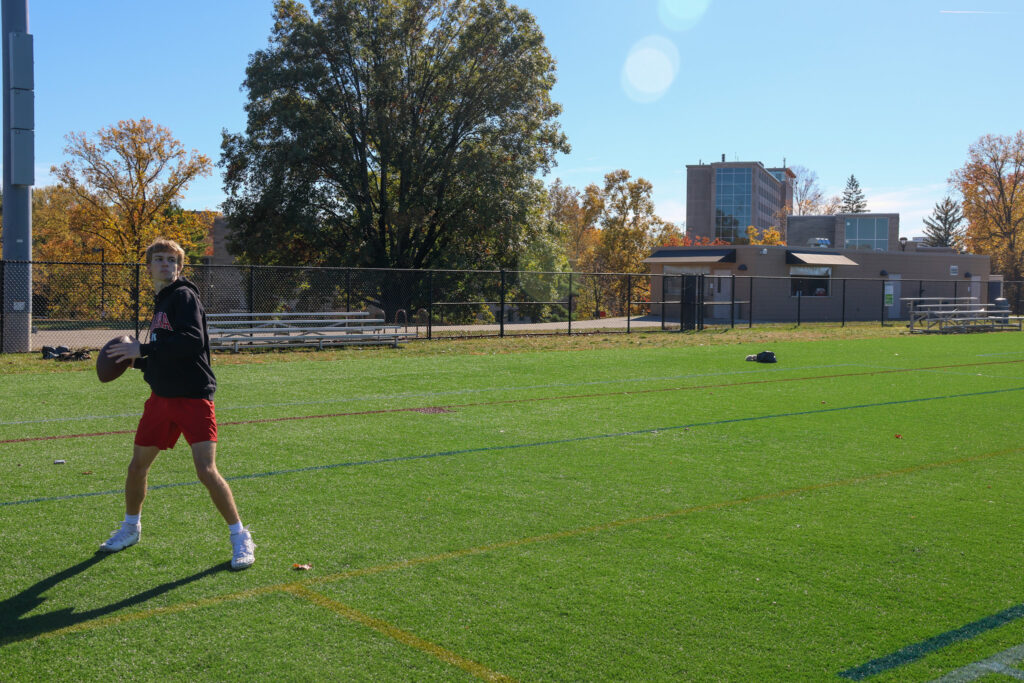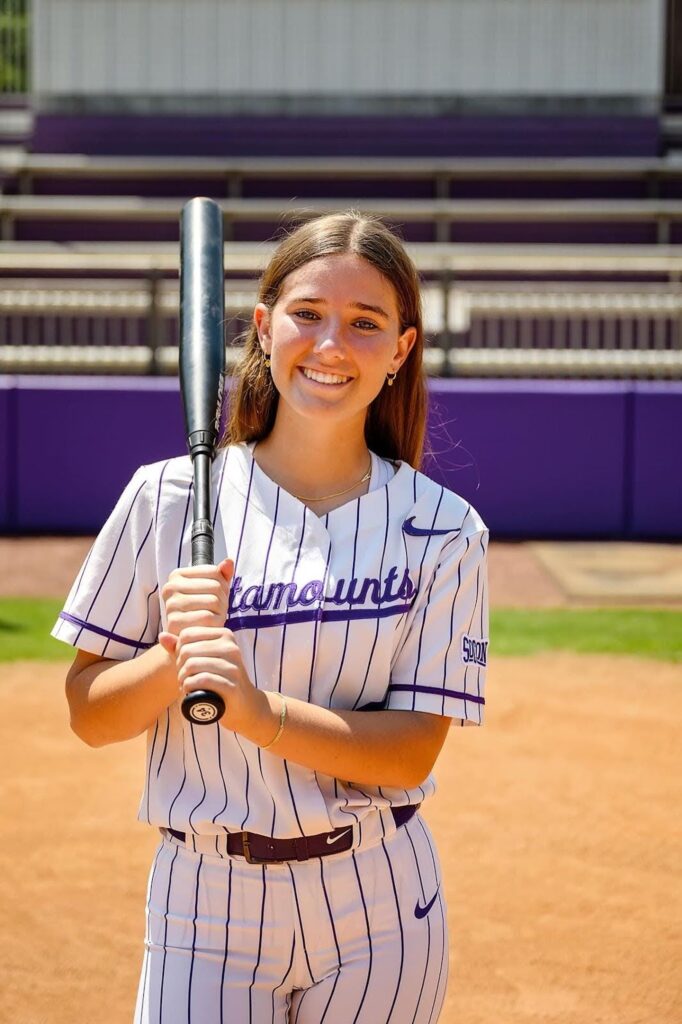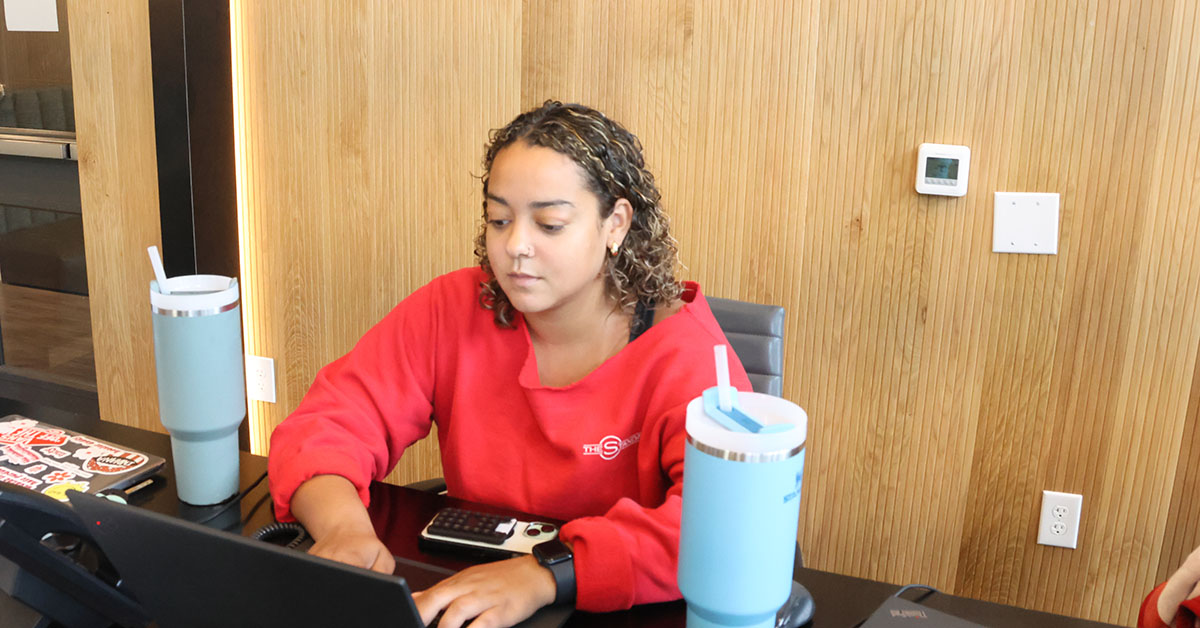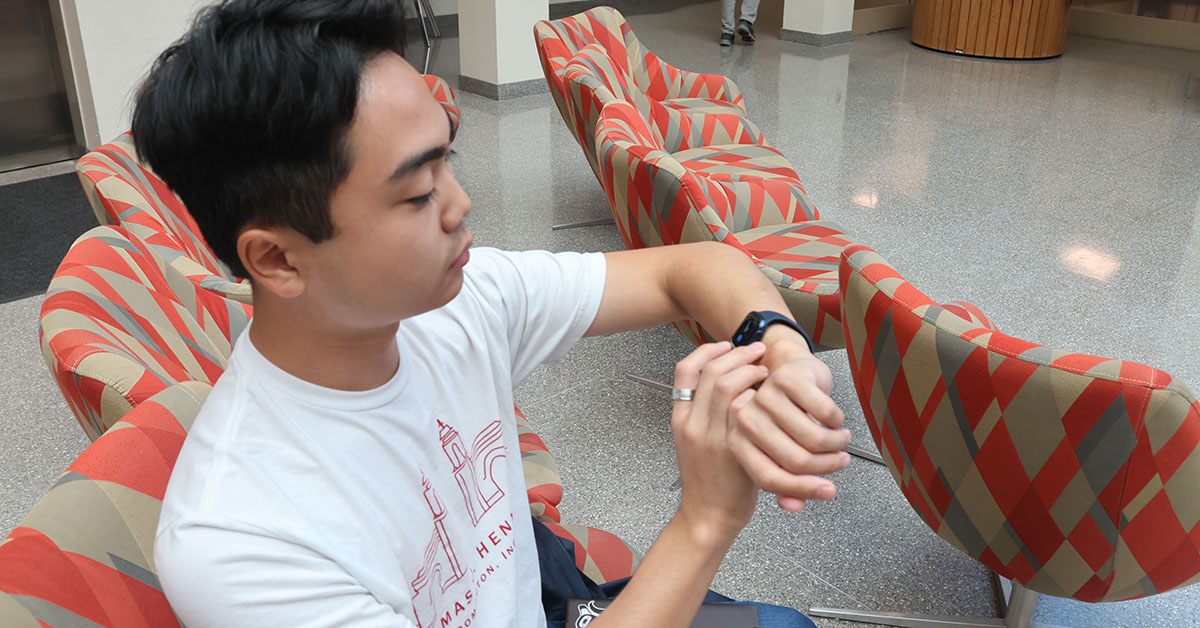The NIL Gap: Why Lesser-Known Athletes Struggle to Compete in the New Era
By: Natalie Jordan, Ja’Ryah Fitts, Aidan Arnold

INDIANAPOLIS, Indiana (November 5, 2024) – As Ava Giglio stood on the mound at Western Carolina University, the stadium buzzed with excitement, the weight of her new role as a Division I pitcher settling on her shoulders. With her heart racing and the crowd’s cheers echoing in her ears, she recalled countless hours spent perfecting her craft in her backyard, envisioning this very moment. As she wound up and delivered a fastball that sliced through the air, she felt a rush of adrenaline—not just from the thrill of the game, but from the realization that her dreams of competing at the collegiate level were finally becoming a reality. However, this reality differs from collegiate athlete to athlete, especially with the new NIL ruling. Athletes like Ava Giglio who are less known, profit less from the ruling than their peers who attend bigger schools or play more widely watched sports.

The implementation of Name, Image, and Likeness (NIL) regulations has dramatically changed the field of college sports and specifically the athletes who participate in them. The regulations were initially designed to allow student-athletes to profit off of their personal brands. However, these changes have predominantly benefited athletes at high-profile, Division I programs. And now, a pressing question remains: what does this mean for lesser-known athletes, particularly those attending smaller schools or playing less watched sports? Is the NIL era fair to all student-athletes, or does it perpetuate a cycle of inequality? Eventually, as the debate unfolds, one must question whether all these regulations could be further honed to provide a fair playing field for all participants, regardless of their fame or high school affiliation. The future of collegiate athletics will depend on striking the right balance that respects both the value of every student-athlete and the equity of NIL opportunities offered at every division and program level.
This creates a serious question about equity and inclusion regarding NIL opportunities in today’s college athletics environment. While high-profile program athletes line up significant endorsements and sponsorship deals, those from smaller institutions or competing in less visible sports struggle for such recognition. Ava Giglio is a current freshman student-athlete at Western Carolina University who provides major insight into the complexities of the NIL major regulations and what that implies for the athletes, particularly those from smaller schools. She says in her interview that her school schooled the athletes on NIL: “At the beginning of this school year, our athletics department sat all of the athletes down to explain NIL and what it can do for us as athletes and people. However, Giglio is concerned about inequality in this regard, especially for those athletes that were not part of the schools within the conferences of Power Five. “I do not think that smaller or less well-known athletes have a fair chance to earn from NIL deals because we are not a Power 5 school-meaning we do not have as many opportunities or connections to large companies that typically tend to sponsor athletes.”

The most recent interview on the NIL changes was with a freshman and current student manager for USC Athletics, Ryan Abaye. Abaye said that regulation of NIL allows college athletes for the very first time in history to profit from their names and images-a dramatic shift, he thinks, is overdue. Furthermore, he was all for the change, emphasizing that student-athletes should profit off their work and revenue they help bring into their respective programs, especially within those revenue-garnering sports like football. Though he does see the positives of NIL, Abaye brings up a number of issues it causes, like increased use of the transfer portal. He noted that athletes will leave their current schools in hopes of better NIL deals at other schools, which definitely affects team chemistry. Additionally, on the likelihood of lesser athletes signing NIL deals, Abaye was optimistic. He explained how powerful self-marketing would be an important key in the use of D2 and D3 basketball influencers who have huge social media followings by creating effective content. He thinks that while high-profile recruits have an easier avenue to explore, under the structure of NIL, all can profit if they market themselves well. Furthermore, he projects college sports will continue to get more professional in the years ahead, schools likely paying players directly in addition to the NIL opportunities. In Abaye’s mind, all this will ultimately be a good thing for the athletes, even though he realizes there could be some residual issues regarding competition and equity in what will be a new world for college athletics. Meanwhile, as these changes take shape, Abaye stresses the necessity that their long-term effects need to be carefully observed.

Lauren Arnold, a senior midfielder with the Villanova women’s soccer team, was recently discussing the transformative effects of NIL regulations in collegiate athletics. Arnold sees NIL as a positive, considering how hard it often is for college athletes to find jobs given their demanding schedules. “Overall, I think NIL is very beneficial for college athletes,” she said. But she added that its benefits are distributed in a lopsided manner, with most of the benefits accruing to athletes in high impact sports such as basketball and football. Programs like Villanova struggle to compete against the much larger schools that have more lucrative NIL deals. Furthermore, Arnold went on to say that this could be the time in which small sports and the lesser-known athletes get lost in the shuffle. The companies want visibility and, ultimately, profitability, hence the bigger athlete often will get the better endorsements. However, going forward Arnold does believe the new evolution in college athletics could help retain some athletes on campus longer, since they can make money now. She says, however, it will be paramount not to lose focus on personal and educational development. Going forward, adding USC and UCLA into the Big Ten will continue to make travel onerous for the athletes and place additional demands and stress on them, especially those in minor sports. As college athletics continue to evolve, Arnold’s thoughts bring out some of those complexities and inequities that NIL introduces into the collegiate environment.




